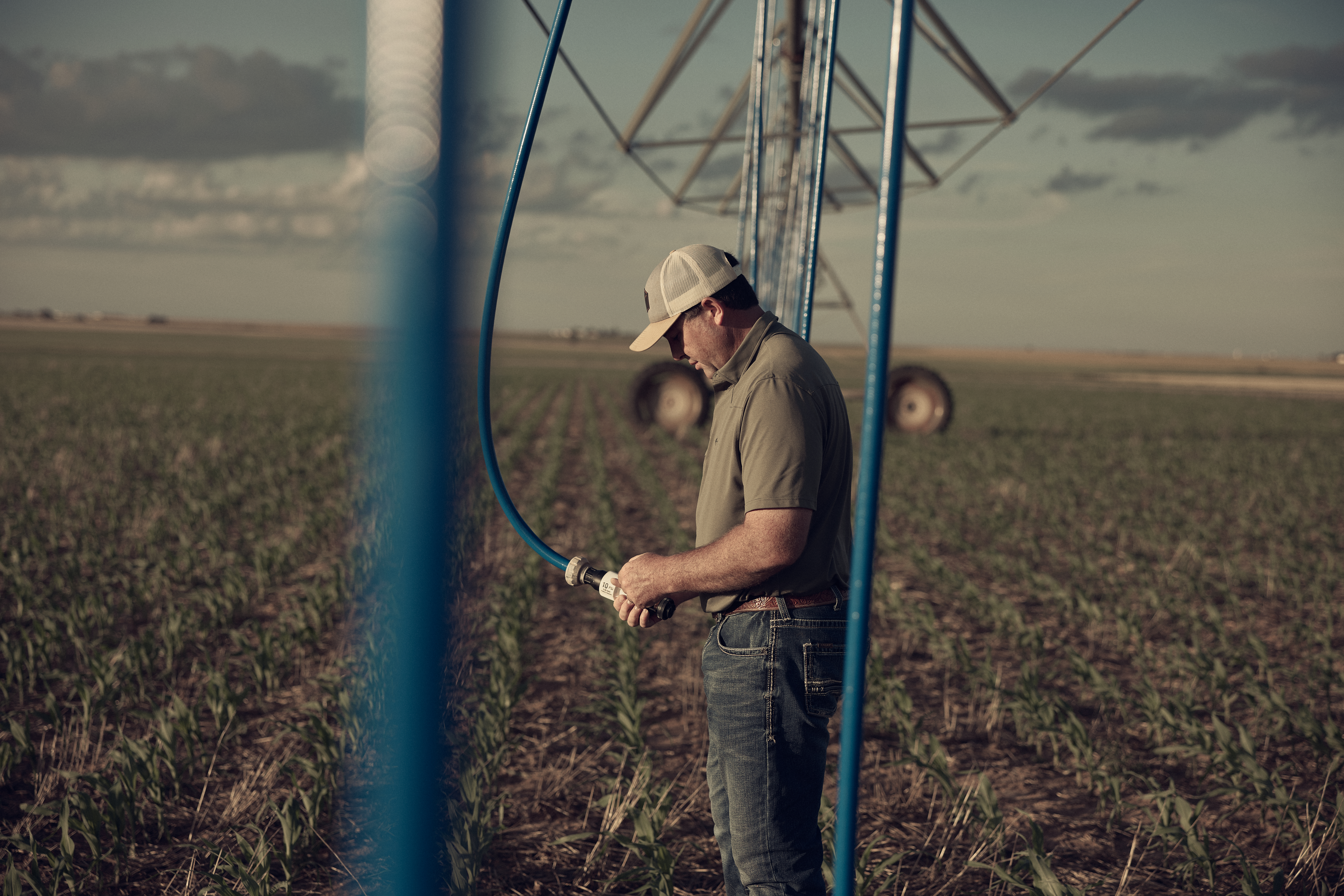Ever taken a road trip across Texas and ended up in the middle of nowhere? You pass fields of corn, cotton and other crops…and then you spot a giant sprinkler. To most, it’s just part of the scenery. But it’s doing more than watering plants; it’s part of a bigger story. One that shows how Texas farmers are using efficient irrigation to protect their most precious resource: water.
Let’s take a closer look at the importance of irrigation, how efficient irrigation works, and how it’s helping farmers grow more with less.
Why Irrigation Matters
When rain doesn’t come, you probably turn on the sprinklers to keep your lawn alive. Farmers are doing the same thing, but on a bigger scale.
Keith Sides, state irrigation engineer for the Natural Resources Conservation Service (NRCS) in Texas, knows all about the importance of irrigation. He grew up on a cotton farm and has spent his career helping others use irrigation wisely.
One of the biggest advantages of irrigation, Keith says, is the stability it brings to Texas’ unpredictable climate. Limited rainfall and drought make growing crops tough. In some regions, irrigation is used to supplement rainfall, providing crops a drink between storms. But in especially dry areas like the High Plains, irrigation isn’t just helpful—it’s essential.
“Irrigation in this area really helps develop those crops and make sure they are viable and get all the way from the seed to harvest,” Keith shared.
Without a viable harvest, farmers lose income—and consumers feel it too. For example, without irrigation in West Texas, the cotton supply would shrink, making clothes more expensive. But, it doesn’t stop at textiles. This ripple effect touches our food production as well.
Irrigated agriculture contributed $4.7 billion statewide in 2007 alone. Imagine what that number looks like today. Irrigation isn’t just something farmers and ranchers do in a bubble – its use affects our food, economy and water supplies and that’s why they’re on a mission to use it wisely.
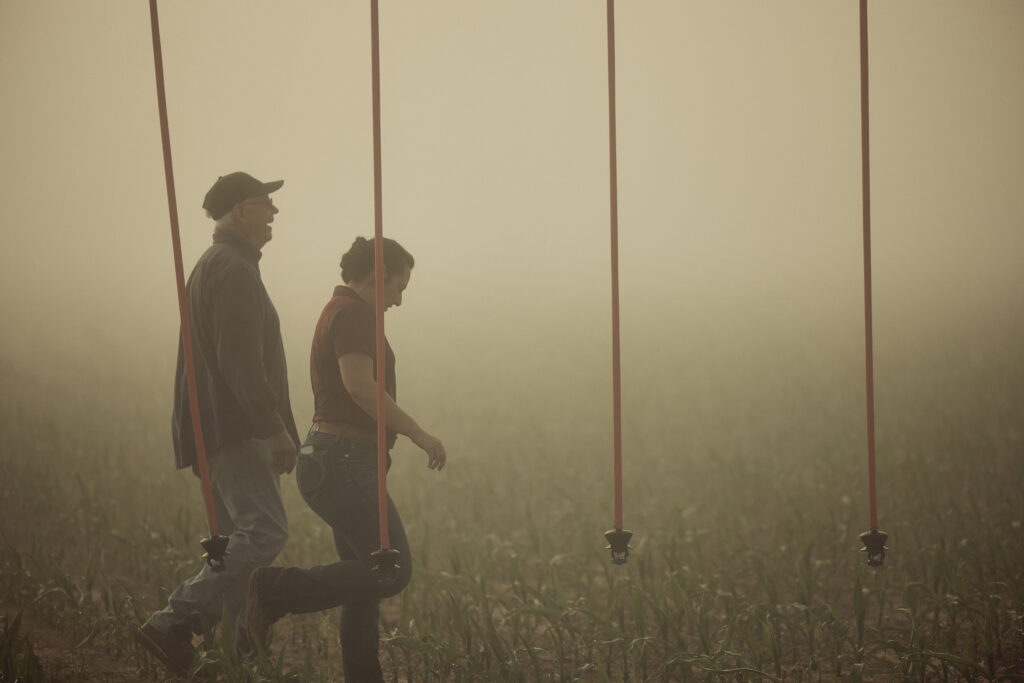
Irrigation Then and Now
Today’s irrigation systems look a lot different than those used a generation ago. One of the biggest evolutions Keith noted is how much better modern systems are at applying water.
“You put it in a ditch, it evaporates. You put it in the furrow, it evaporates. You put it in the air, it evaporates,” Keith said.
Older irrigation systems and methods simply waste water through inefficient application that ultimately leads to evaporation, meaning less water can be used by the plants. Farmers are investing in upgrades that boost efficiency and help conserve shared water resources.
How Efficient Irrigation Systems Work
New water conservation technology has taken farm irrigation to the next level. Keith said two of the most common irrigation systems used in Texas are center pivots and drip irrigation.
Center pivots come in various sizes and look like long, metal arms that stretch across a field. They rotate slowly around a central point. Long hoses called drops hold the nozzles where water is released.
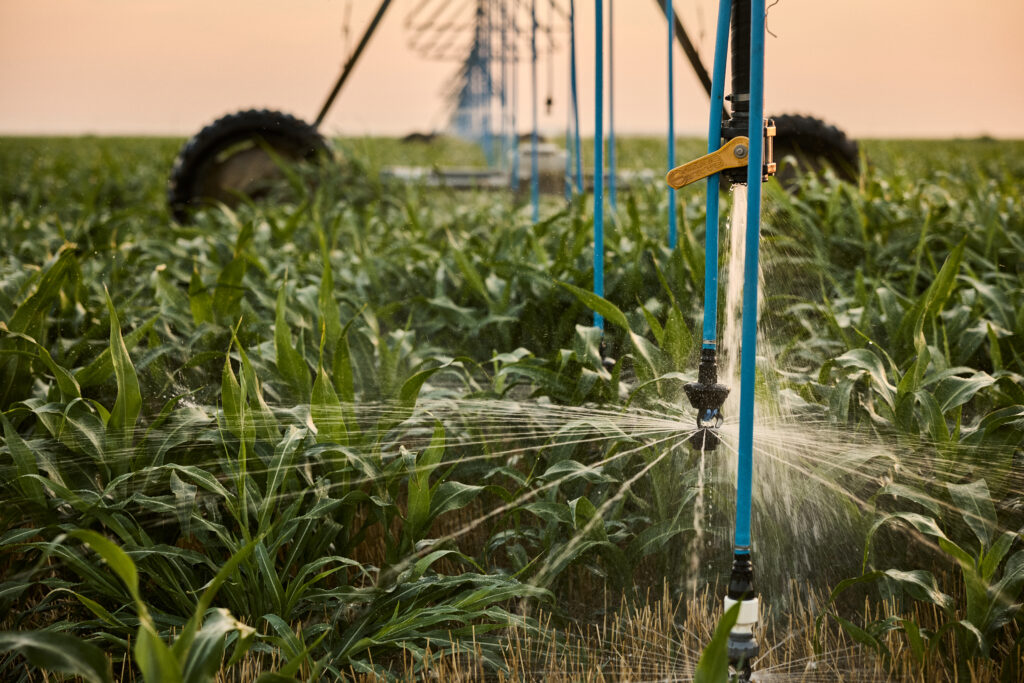
“Center pivots and other sprinkler systems start working through the soil profile from top down,” Keith explained. “You want to be able to match the amount of water that you’re putting on with the amount of water that the soil can take in.”
Often, center pivots with drops lower to the ground can help reduce evaporation and can apply water with more than 90 percent efficiency.
Drip systems work a little differently. They are installed underground where drip tape or tubes are placed strategically beneath a field.
“With drip systems, you’re kind of working from the bottom up. So, you put the water directly in the root zone,” he said.
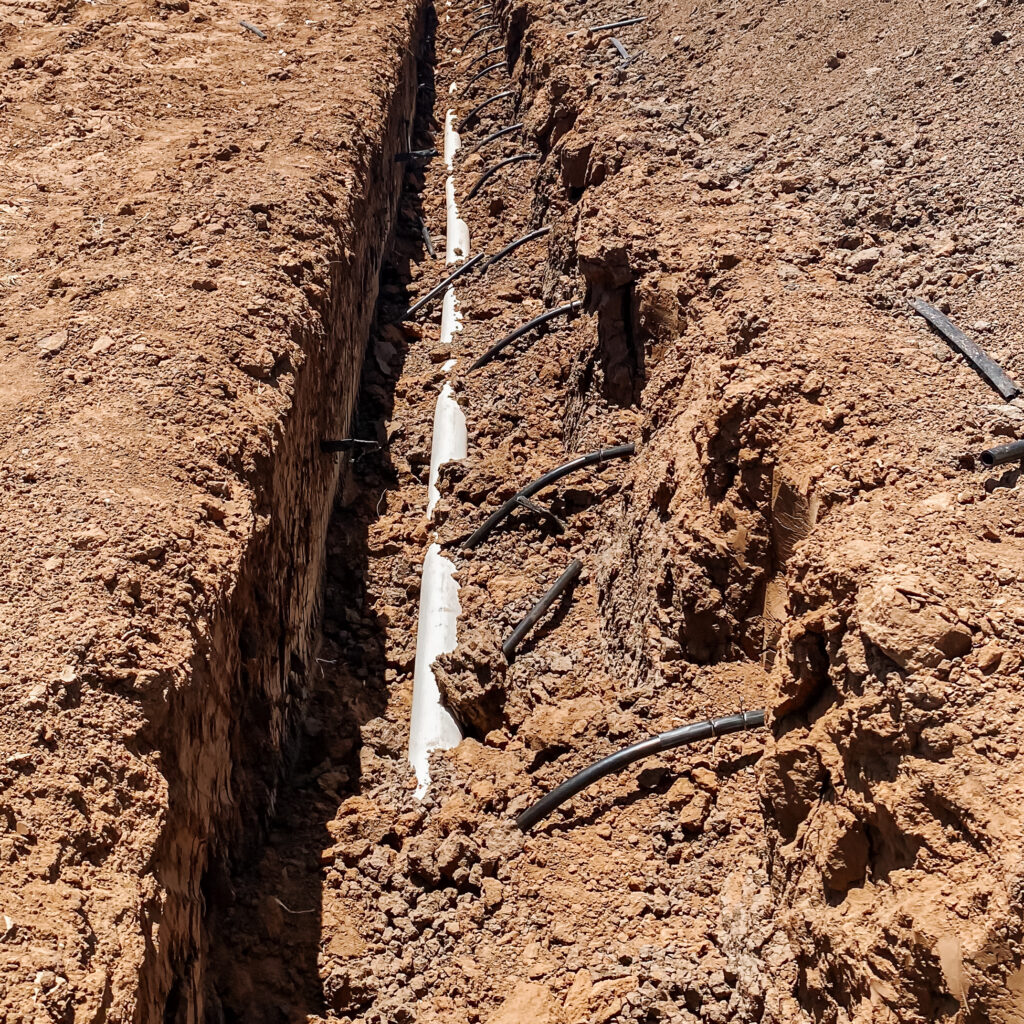
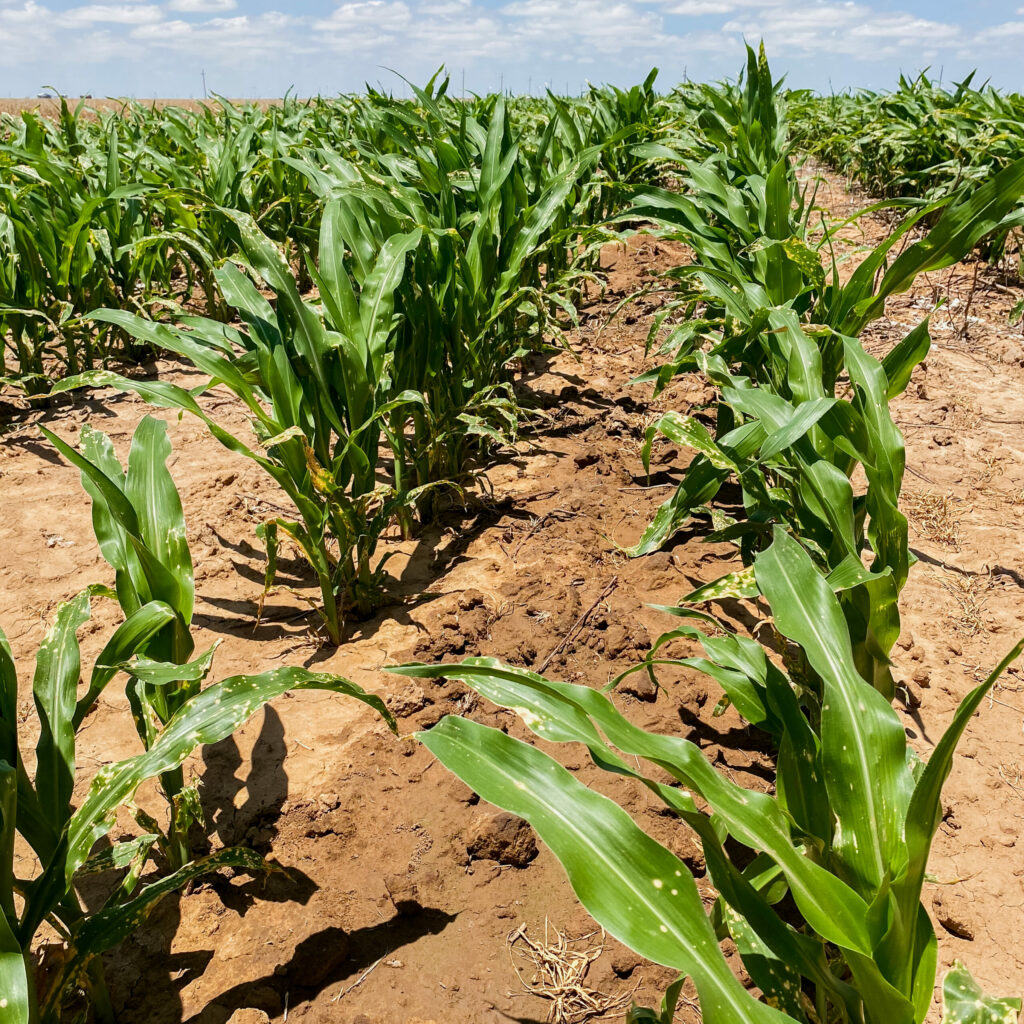
This precise application also helps control weeds because they aren’t receiving water. Since the system is buried, wind and evaporation are taken out of the mix. When you combine it with the fact that it emits water droplets slowly using little pressure, drip irrigation is a very effective form of irrigation with up to 96 percent efficiency.
Cost, farm size and geography all factor into which system farmers choose. Center pivots are scalable and tend to cost less than drip irrigation, often making them a good fit for larger farms. Drip irrigation systems, on the other hand, suit small or irregularly shaped fields and tend to require less maintenance.
While center pivots and drip irrigation are the most common, Keith mentioned that side roll irrigation is popular in Central Texas. There, side rolls, essentially a pipeline on wheels, work well on smaller, more narrow plots of land used for
pasture land.
Amplifying Efficient Irrigation
To the casual observer, irrigation may seem like just pipes and hoses. But behind the scenes, it’s a careful science. One that blends timing, technology and conservation. It’s not just turning on a hose; farmers make every drop and decision count.
“Water conservation is a big deal for Texas farmers because they know it’s a finite resource,” Keith shared. “Farmers nowadays are using a lot of tools to help increase their efficiency.”
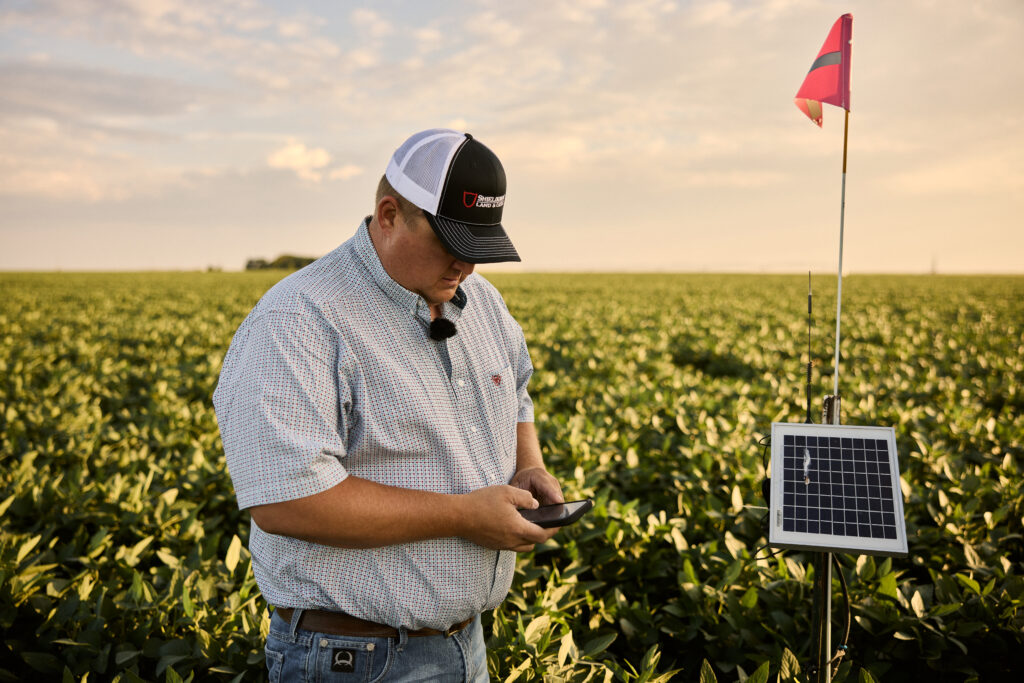
What’s contributing to this success is marrying water management practices with water conservation technology to know when and how much to irrigate.
Not only are flow meters showing farmers how much water is passing through their irrigation systems, but they’re also using telemetry technology. Using a cellular system, telemetry sends real-time data to a farmer’s phone, helping spot issues fast. If there is a leak or other problem, it allows a farmer to remotely start and stop their systems, saving water in the process.
On-farm weather stations also give farmers accurate weather data to help them know whether they received rain during a recent storm event and how much. Soil moisture probes provide a snapshot of what’s going on below the ground and how much moisture is available to the plant within the soil profile.
“So they can make the decision to keep the system on and let it go around one more time or if they’ve got enough moisture to finish out the season,” Keith said.
There is more water conservation technology available to farmers than ever before, and that’s good news for all of us. These tools help farmers make the most of every drop. But is there still room to grow?
“We’ve done a lot of work with the irrigation efficiency,” Keith explained. “There’s always room for improvement. I think it’s going to take a new step in technology and maybe something someone is dreaming about down the line to take that next step to irrigation efficiency.”
Thanks to constant innovation and a deep commitment to conservation, Texas farmers are using efficient irrigation to grow more with less. So the next time you see a center pivot turning in a wide-open field, remember that behind it is a story of innovation and responsibility.
